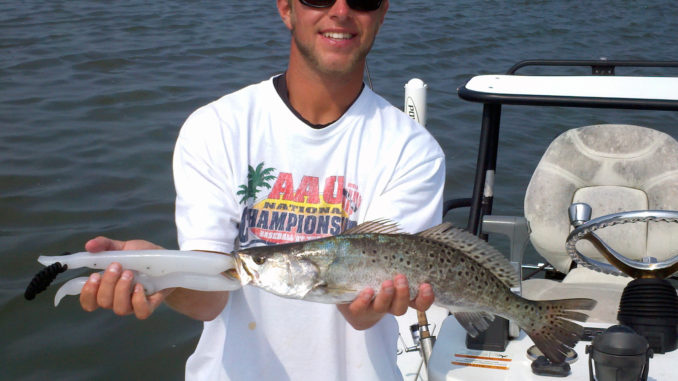
As long as it takes the moon 50 minutes longer than a 24-hour day to orbit the earth, tides will change every day, affecting the lower Cape Fear River and the rest of the world’s coastal corrals. At an average of 3½ feet per tidal session, spectacular speckled trout ambush points will materialize very quickly along the tidal path.
Tides control the movements of prey and feeding patterns of predators. As shallow flats recede on ebb tides, currents wash and corral bait fishes in the adjacent sloughs for the next member of the food chain to feast upon. While the preferred tidal stage offers ideal conditions, these sweet spots will disappear just about as fast as they pop up.
Speckled trout, especially during the summer, position themselves near grass edges, oyster points and along seams where two opposing currents meet. As tides progress, ideal conditions eventually deteriorate, and fish will shift to alternative positions nearby.
Choose a series of grass lines or oyster points to hit in succession along the tidal path. Find places where water will be ideal first, and then follow the tide up or down river to continue to fish waters under ideal conditions. Even though the tide may not have a dramatic affect between the ocean and Snow’s Cut, sometimes one to two feet will expose or flood hot spots within the river system.





Be the first to comment